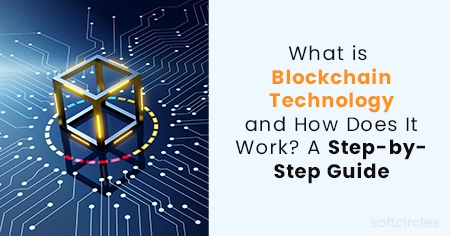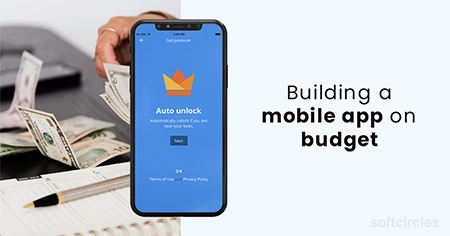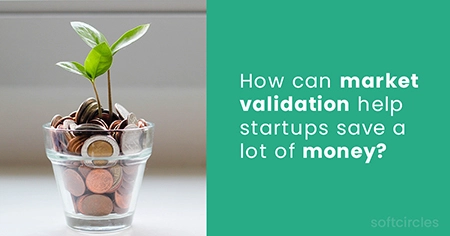We are all aware that Blockchain is an ingenious invention. Blockchain initially disrupted the banking industry, but its applications are now being researched across various industries, including software development. With Blockchain's increasing popularity, everyone recognizes the technology's potential. In many industries, blockchain technology is a game-changer.
Organizations may use digital technologies to change their current business practices, such as bookkeeping and accounting. In such cases, some significant benefits for businesses include cost-effectiveness and resource efficiency. Blockchain technology is the most powerfully transformative technology in recent history. So, today, let us learn about blockchain technology in-depth and explain how it works.One of the most recognized uses of Blockchain is in cryptocurrency mining. Setting up a Bitcoin mining rig, which includes specialized hardware to validate transactions, is an example of how Blockchain powers real-world applications.
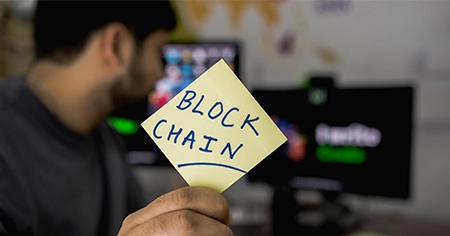
What Is Blockchain Technology?
"The blockchain is an impenetrable digital ledger of economic transactions that can record financial transactions and virtually anything of value."
A Google Doc is an analogy for understanding blockchain technology. When we create a document and distribute it to a group of people, we distribute it rather than transferring or copying it. It establishes a decentralized distribution chain where everyone has concurrent access to the document. No one is barred out; another party makes changes, and all changes to the document are completely transparent and recorded in real-time.
Of course, Blockchain is more complex than a Google Doc is, but the analogy is appropriate because it highlights three key concepts in the technology:
- Keys for cryptography
- A peer-to-peer network with a shared ledger.
- Keys for cryptography
Blockchain is a revolutionary and emerging technology that reduces risk, eliminates fraud, and increases trust systematically for a wide range of applications.
The rise of Blockchain technology has increased the demand for blockchain-certified experts. Blockchain technology has grown in popularity since the virtual currency Bitcoin in 2009. With the ever-expanding applications of Blockchain technology in today's world, it has garnered much attention. Because of the long-term potential of blockchain technology, many people want to pursue a career in Blockchain. As a result, the number of qualified Blockchain experts has recently increased. However, the most intriguing aspect of the discussion would be the fundamentals of blockchain expert certification. Readers could then discover a summary of guidelines for preparing for the expert certification exam and learning Blockchain technology.
How Does Blockchain Technology Work?
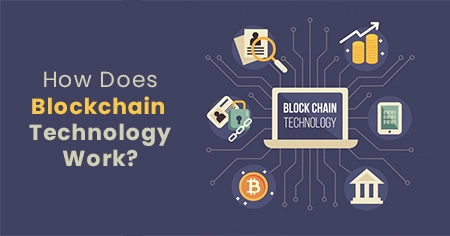
We also know that a blockchain is a collection of data-storage blocks. In 1991, a group of researchers created it to protect digital documents from being edited or tampered with.
A blockchain is a publicly accessible distributed property. Data that has been recorded on a blockchain cannot be changed. As a result, data is only collected when the maximum number of participants agree.
Step 1: Data
The Blockchain decides the sort of data stored in a block. The blockchain stores transaction information like the receiver, sender, and transaction amount, if the data is about Bitcoin.
Step 2: hash
The block also contains a hash, which is similar to a fingerprint. The hash of a block is computed when it is created. If anything changes within the block, the hash will also change. That is why hashing helps in the detection of changes in a blockchain. It is why hashing is useful in detecting changes in a blockchain. When a block's fingerprint changes, it is no longer the same block.
Step 3: Previous Hash data
The final component of a blockchain is a hash of a previous block. Because of these features, the Blockchain is extremely safe to trust and use. Consequently, each block in blockchain technology is linked to the previous hash's data, but if some of the blocks' data changes, the hash changes instantly.
Computers today can store hundreds of thousands of hashes per second. When restoring the Blockchain's validity, the hashes of tampered blocks and the hashes of other blocks are changed by default.
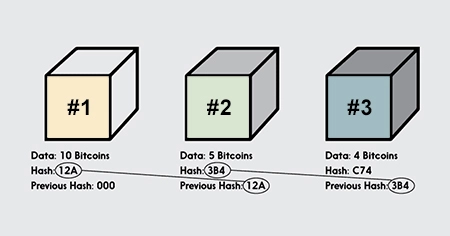
The Blockchain has gained popularity due to the following reasons:
- It is decentralized because a single entity does not own it.
- The information inside is encrypted.
- Because the Blockchain is immutable, no one can tamper with its data.
Blockchain comprises three main concepts: blocks, nodes, and miners. Block
Every chain is consists of multiple blocks, each of which has three basic elements:
- The information is contained in the block.
- A nonce is a 32-bit whole number. A random nonce is created when a new block is added, resulting in a block header hash generation.
- The nonce is associated with the hash, which is a 256-bit number. It must start with many zeroes (i.e., be extremely small). A nonce creates the cryptographic hash when the first block of a chain is generated.
Miners
Miners utilize the mining process to add new blocks to the chain. Each block in a blockchain comes with its own distinct complex and nonce. However, hash from the previous block within the chain also challenges mining, especially on huge chains. Miners utilize specially designed software to deal with the complex math equation of creating a good hash. Since the nonce is just 32 bits, the soup has around 256 bits, roughly four billion.
Making changes to any block earlier in the chain necessitates re-mining the affected block and all subsequent blocks. That is the reason why manipulating blockchain technology can be highly complex. Take it as "safety in math" because finding golden nonce requires much processing time and power.
Nodes
Decentralization is an essential concept in blockchain technology. Instead, it is an open ledger distributed through the chain's nodes. Nodes are the electronic devices that keep replicas of Blockchain and help keep the network operating.
Each node has its version of the Blockchain, and the network has to be able to algorithmically approve each newly mined block so that the Blockchain can be kept up-to-date authentic, reliable, and confirmed. Because of Blockchain's transparency allows every action on the ledger to be easily examined and scrutinized.
Each participant is assigned a specific alphanumeric identification number, which is used to track their transactions. Combining public information and a regular check and balance system enhances the integrity of Blockchain and increases confidence in the users. Blockchain’s are the capacity of trust through technology.
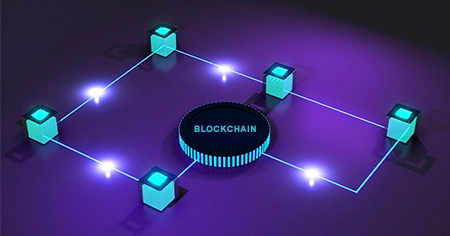
Key elements of a blockchain
- The technology of distributed ledgers and its immutable record of transactions are accessible to all network participants. With this shared ledger, transactions are recorded only once, eliminating the duplication of effort common in traditional business networks.
- Unchangeable records No participant can temper or change a transaction once recorded to the shared ledger. If an error is discovered in a transaction record, must add a new transaction to correct the error, and both transactions are then visible.
- Smart contracts A set of guidelines, known as a smart contract, is recorded on the Blockchain and implemented automatically to speed up transactions. A smart contract can specify the terms for corporate bond transfers, the payment of travel insurance, and much more.
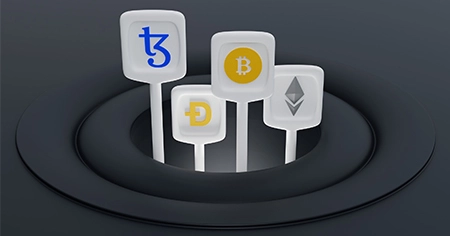
Why do we Use Blockchain?
Blockchain’s store information on monetary transactions using cryptocurrencies, but they also store other types of information, such as product tracking and other data. It can use one of the many ways of Blockchain to store critical business data.
The finance sector is currently the most significant application using the technologies. International remittances are one example. For example, the World Bank has estimated over $430 billion US in cash transfers were built-in 2015. There is a high demand for cryptocurrency developers.
Blockchain technology could eliminate the intermediary in these kinds of transactions. Personal computers became available to everyone through the development of Graphical User Interface (GUI), a form of the "desktop." The most popular GUI designed for Blockchain is known as "wallet" applications, which customers use to purchase goods using Bitcoin and then store them alongside another cryptocurrency.
Will Blockchain Technology continue to be in the Future?
Some readers may remain skeptical of a career in Blockchain technology. One of the immediate concerns for anyone considering a career as a Blockchain specialist is whether the technology has real potential. The game has completely changed with the application of Blockchain Technology, with applications becoming increasingly popular across various sectors.
Blockchain technology is increasing transparency in the healthcare and manufacturing industries. Its distributed ledgers effectively eradicate fraud for business apps, particularly financial systems. As the sharing economy gains popularity, Blockchain technology can help reduce the need for centralized authority. Furthermore, Blockchain technology significantly simplifies the process of obtaining information.
Blockchain technology's essential characteristics, such as trust, privacy, security, and immutability, demonstrate its promise.
Conclusion
Bitcoin is the first successful blockchain implementation. Today, the world has discovered blockchain technology applications in various industries where trust is desired without the involvement of a centralized authority. Blockchain is growing with time, introducing new developments such as smart contracts, which have proven extremely useful. Because of its successful operation, Blockchain has captivated many people.
A blockchain is a distributed ledger that stores encrypted data blocks and then connected them to form a single sequential version of the truth for the data. Blockchain substitutes the time-consuming and complex process of business-to-business transactions with a transparent, verifiable, and tamper-proof alternative.




